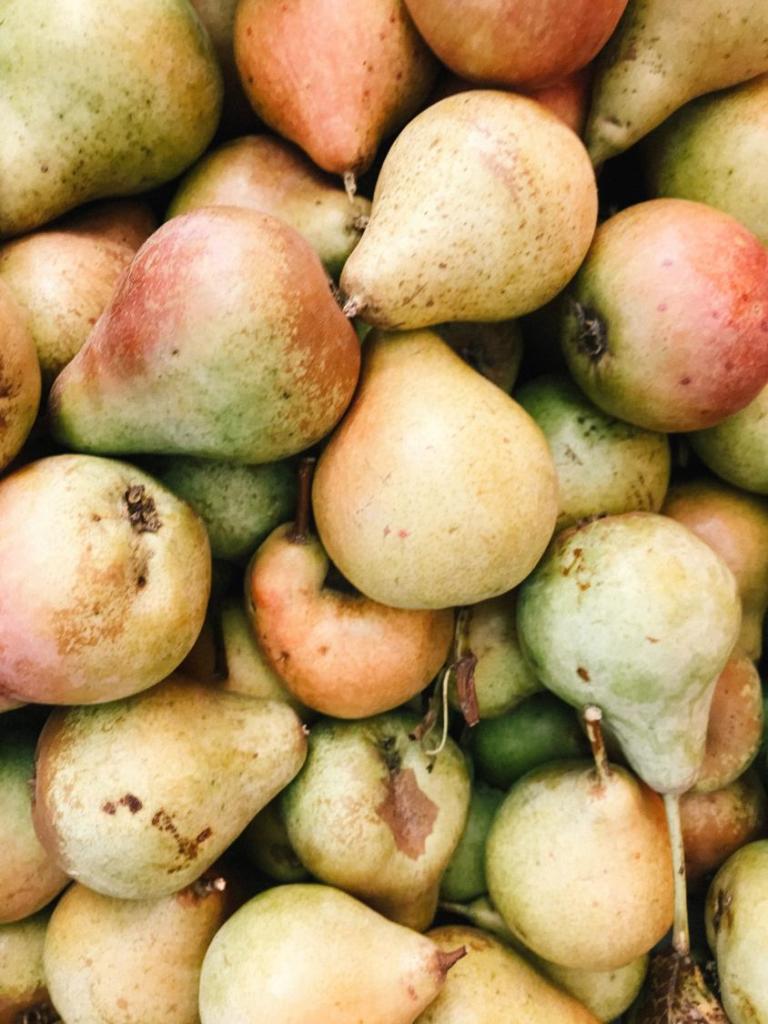Local expert, Tony Chalcraft fills us in.
It’s been a poor year for pears. Some of my trees have produced next to no fruit, while others have cropped but with many of the pears misshapen or small-sized. Even the usually reliable Conference has carried only a token crop. Interestingly, most of the few trees yielding a reasonable harvest have been those that flower late, such as the Conference lookalike Concorde or the long keeping Winter Nelis. Therein, I think, lies the main reason for this year’s paucity of pears: the blossom of the early flowering types were damaged or destroyed by frost, whereas that of the slightly later flowerers partially escaped.
I mention this because fellow pear growers have suggested that another factor responsible for this year’s pear dearth is pear rust. If you have pear trees, you’ll probably be familiar with this affliction if not its Latin name, Gymnosporangium sabinae. The tell-tale sign is bright orange coloured spots on the upper leaf surface. Less obvious, and usually appearing later in the summer, are raised gall-like growths on the underside of leaves beneath the spots on the upper side. It’s also said that the fruit can show signs of the rust, although, thankfully, I’ve never seen this.
There’s no doubt that pear rust has been more prevalent this year than before. It’s another one of those diseases, possibly climate-driven, that’s now become endemic in the York area. Until this season, it’s been something I’ve tended to ignore, as it seemed to have no impact on tree health or fruitfulness. However, the level of infestation this year has prompted a little research that suggests rampant pear rust can be a problem, weakening young trees and encouraging cankers (bark lesions) in older ones.
If you look into pear rust in more detail (a good source of information is the Royal Horticultural Society’s (RHS) website at https://www.rhs.org.uk/advice/profile?pid=236) you’ll see it has a complex life cycle. Unlike many fungal diseases, it requires two living host plants to survive. In summer and autumn it exists on pears, but in winter, to remain viable when pears are leafless, it lives on junipers. With juniper not the most common of plants, you might think pear rust would struggle to persist. However, there must be enough ornamental junipers lurking in gardens to sustain the fungus. This may also explain why pears on my field orchard, far away from any gardens show fewer signs of infection.
So, if you had pear rust, what should you do? Cleary, not having juniper bushes and pear trees cheek by jowl might help. Otherwise, there’s probably not much that can be done. Even if you use sprays, there is no fungicide authorised for amateur use on edible pears. Some websites advise that affected leaves should be removed in summer but on large trees this is impractical. There is also evidence with which the RHS concurs, that significant defoliation will stress and weaken trees. Sweeping up leaves in autumn would seem a sensible precaution, as would generally keeping trees healthy by mulching and pruning out weak and crowded wood. Apart from this, perhaps the best advice is to see what happens next season. Experience suggests lots of fungal diseases vary in prevalence year by year, often according to weather conditions. Although it’s unlikely that pear rust will magically disappear, it may well remain a largely cosmetic problem rather than crop threatening.









Add a comment